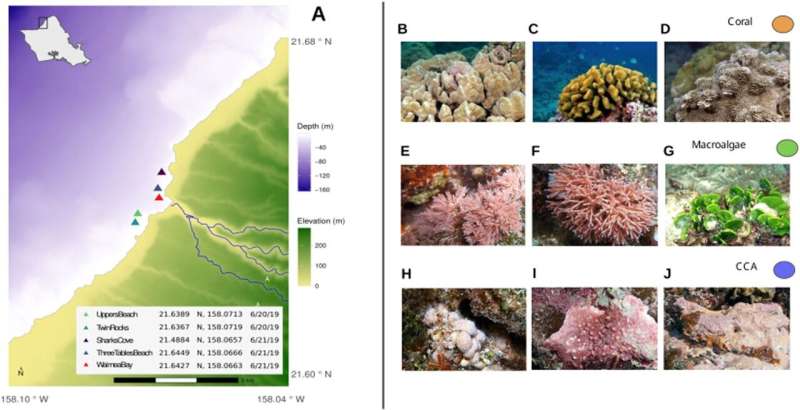A groundbreaking study, co-led by a doctoral student at the University of Hawaiʻi at Mānoa, has illuminated a novel approach to monitor the health of coral reefs in Hawaiʻi. Published in Communications Biology, the research unveils a diverse array of chemical compounds unique to each type of coral and algae present in reef ecosystems. These newly discovered metabolites offer valuable insights into the health status of reef organisms, potentially revolutionizing reef monitoring efforts.
Coral reefs, bustling ecosystems teeming with life, rely on primary producers such as macroalgae, coral, and crustose coralline algae to sustain their vitality. Through the conversion of sunlight into energy and the synthesis of essential compounds, these organisms play a pivotal role in maintaining reef resilience and biodiversity. By studying the microorganisms and chemical compounds associated with these primary producers, researchers gain critical insights into reef health dynamics.
Co-lead author Sean Swift, a marine biology doctoral candidate at UH Mānoa, emphasizes the significance of microorganisms and organic chemicals in assessing coral reef health. These components serve as indicators of ecosystem response to stressors like disease and environmental changes, offering a window into the intricate balance of reef microbiomes.
The study, conducted in the watershed of Waimea Bay on Oʻahu, involved extensive sampling of coral reef organisms and subsequent microbial DNA analysis. Remarkably, over 36,000 unique microbial groups were identified, each intricately linked to host organisms and ecosystem functions. Limu, coral, and crustose coralline algae harbored distinct microbial communities tailored to their specific ecological roles, from nutrient recycling to organic matter degradation.
Building upon this microbial diversity assessment, researchers employed cutting-edge organic chemistry techniques to analyze the samples, uncovering over 10,000 distinct chemical features. These compounds, ranging from potential food sources for microbes to signaling and defense molecules, represent a treasure trove of chemical diversity within reef ecosystems.
Helena Mannochio-Russo, co-lead author and postdoctoral researcher at UC San Diego, highlights the significance of these unique compounds in mediating ecological interactions within coral reef environments. With ongoing research focused on assessing the impact of urban fire runoff on reef ecosystems in Lahaina, the study’s findings hold promise for real-world applications in reef health monitoring and environmental assessment.
Professor Craig Nelson, lead investigator of the study, underscores the importance of utilizing these techniques to understand the effects of fire-related contaminants on reef health, signaling a proactive approach towards safeguarding coral reef ecosystems.
The catalog of coral microbes and metabolites unveiled by this study represents a significant stride towards advancing our understanding of reef health dynamics and underscores the urgent need for innovative monitoring strategies to safeguard these vital marine ecosystems.
